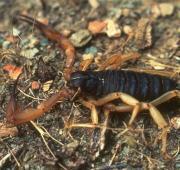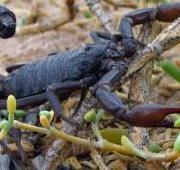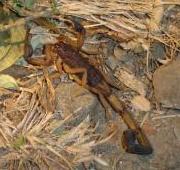 The scorpion is an eight-legged carnivorous anthropod, that are found worldwide. There are around 2,000 different species of known scorpion found in most countries around the world today.
The scorpion is an eight-legged carnivorous anthropod, that are found worldwide. There are around 2,000 different species of known scorpion found in most countries around the world today. The scorpion is mainly found in the southern hemisphere in deserts and jungle habitats alike. The most northern place the scorpion can be found in the wild is the Isle of Sheppey in the United Kingdom, which is a small island in the North of Kent.
The scorpion is mainly found in the southern hemisphere in deserts and jungle habitats alike. The most northern place the scorpion can be found in the wild is the Isle of Sheppey in the United Kingdom, which is a small island in the North of Kent.

Scorpions are arachnids (not insects) and the scorpion is most closely related to spiders and ticks. Scorpions are sometimes referred to as ancient animals as scorpions have been on Earth for over 400 million years, meaning that scorpions already existed on Earth when the dinosaurs arrived.
Scorpions are generally nocturnal animals meaning that they spend the day under rocks and in crevices and then come out to hunt in the safety of darkness. Scorpions are carnivorous animals and paralyze their prey using the venomous sting on the end of their tail so that the scorpion can eat it without trouble. Scorpions also have two large claws or pincers which are located at the front of the body of the scorpion. The claws of the scorpion allow the scorpion to effectively hold onto prey in order to both sting it and then eat it.
Female scorpions give birth to live young in litters that can range from 4 baby scorpions to 8 or 9 baby scorpions. The baby scorpion climbs onto the back of the mother scorpion almost immediately after birth. The mother scorpion will look after her baby scorpions until they are able to hunt for themselves.
For the majority of the time, when a human is stung by a scorpion, the symptoms are often similar to those of a bee sting and are often just swollen and painful. However, around 50 scorpion species are thought to carry enough venom that could cause more serious harm to humans and around half of those 50 scorpion species are believed to be capable of causing fatal results when having stung a human being.

